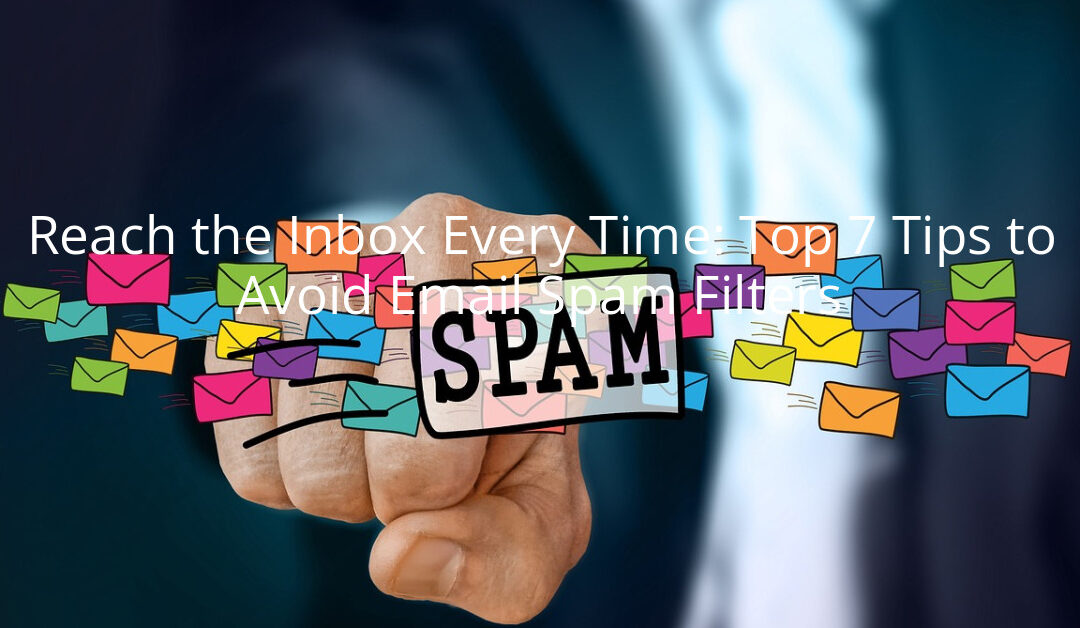 It all started with Bob, a small-town baker who was determined to spread the word about his new line of gourmet cupcakes. Armed with an email list of loyal customers, Bob crafted what he thought was a delightful message, full of tempting descriptions of his famous lemon meringue and salted caramel treats. He hit “send” with the enthusiasm of a man who knew his inbox would soon be flooded with orders. But alas, Bob’s email never made it past the digital gatekeepers. His masterpiece of sugar and buttercream ended up in the dreaded spam folder—unseen, unread, unloved. Bob wasn’t just battling baking temperatures; he was up against email spam filters.
It all started with Bob, a small-town baker who was determined to spread the word about his new line of gourmet cupcakes. Armed with an email list of loyal customers, Bob crafted what he thought was a delightful message, full of tempting descriptions of his famous lemon meringue and salted caramel treats. He hit “send” with the enthusiasm of a man who knew his inbox would soon be flooded with orders. But alas, Bob’s email never made it past the digital gatekeepers. His masterpiece of sugar and buttercream ended up in the dreaded spam folder—unseen, unread, unloved. Bob wasn’t just battling baking temperatures; he was up against email spam filters.
In the world of email marketing, Bob’s story is all too familiar. You craft a perfect email, only for it to vanish into the murky depths of spam filters. But the good news is, with the right strategies, you can outsmart the gatekeepers and ensure your emails reach their destination—the inbox. Let’s take a look at the top seven tips to avoid email spam filters and get your message where it belongs.
Related: 5 Must-Have Elements for a Stellar Newsletter, According to ContentERP
1. Avoid Trigger Words: The Bait that Spam Filters Catch
 Spam filters are like bloodhounds, trained to sniff out certain words and phrases that set off alarm bells. Using words like “free,” “urgent,” “buy now,” or “winner” in your subject line or body text is the email equivalent of shouting “I’m spam!” in a crowded room.
Spam filters are like bloodhounds, trained to sniff out certain words and phrases that set off alarm bells. Using words like “free,” “urgent,” “buy now,” or “winner” in your subject line or body text is the email equivalent of shouting “I’m spam!” in a crowded room.
Instead, think of your email like a conversation at a dinner party. You wouldn’t shout “CONGRATULATIONS, YOU WON A MILLION DOLLARS!” while passing the mashed potatoes. Approach your subject lines and body text with subtlety. Entice your reader without raising suspicion. Choose words that sound natural and inviting rather than desperate or too good to be true.
2. Build a Clean Email List: Quality Over Quantity
 There’s an old saying: “You are the company you keep.” In the world of email marketing, this couldn’t be more true. Sending emails to unengaged recipients or old, inactive addresses is a quick way to get flagged by spam filters. Your email list should be like a well-tended garden—full of healthy, active plants, not withered, forgotten weeds.
There’s an old saying: “You are the company you keep.” In the world of email marketing, this couldn’t be more true. Sending emails to unengaged recipients or old, inactive addresses is a quick way to get flagged by spam filters. Your email list should be like a well-tended garden—full of healthy, active plants, not withered, forgotten weeds.
Regularly clean your email list by removing inactive or unresponsive subscribers. Use a double opt-in process when building your list, so only those genuinely interested in your content receive your emails. If your list is full of engaged recipients, spam filters are far less likely to interfere.
3. Optimize Your Sender Reputation: Be the Good Guy
 Spam filters don’t just look at the content of your email; they also judge you. Your sender reputation—essentially a score based on how recipients interact with your emails—plays a significant role in whether or not your emails land in the inbox. If too many people mark your emails as spam or your bounce rate is high, your sender score will plummet faster than Bob’s hopes for a cupcake frenzy.
Spam filters don’t just look at the content of your email; they also judge you. Your sender reputation—essentially a score based on how recipients interact with your emails—plays a significant role in whether or not your emails land in the inbox. If too many people mark your emails as spam or your bounce rate is high, your sender score will plummet faster than Bob’s hopes for a cupcake frenzy.
To maintain a good reputation, use a reputable email service provider, and keep your bounce rates low by removing invalid or inactive email addresses. Consistency is key: sending emails from the same domain and email address builds trust with both recipients and spam filters.
4. Perfect Your Subject Line: First Impressions Matter
 If your subject line were a person, it would be the first one to shake hands at a job interview. Make it count. A good subject line is clear, relevant, and concise. You want to intrigue your audience, not overwhelm or confuse them.
If your subject line were a person, it would be the first one to shake hands at a job interview. Make it count. A good subject line is clear, relevant, and concise. You want to intrigue your audience, not overwhelm or confuse them.
Avoid using all caps or excessive punctuation (no one likes “!!!!!!!” in their inbox), and steer clear of gimmicks. Think of your subject line like a door opener—it should provide just enough information to make the recipient want to click, without giving everything away. An engaging, trustworthy subject line is often your first line of defense against spam filters.
5. Balance Text and Images: Don’t Be All Flash, No Substance
 Emails that are too image-heavy often raise red flags for spam filters. If your email looks like a Las Vegas billboard, expect it to get blocked. Instead, aim for a balance between text and images. A good rule of thumb is to use more text than images and ensure that all images are accompanied by alt text (a short description of the image).
Emails that are too image-heavy often raise red flags for spam filters. If your email looks like a Las Vegas billboard, expect it to get blocked. Instead, aim for a balance between text and images. A good rule of thumb is to use more text than images and ensure that all images are accompanied by alt text (a short description of the image).
Think of it like serving a meal—your text is the nutritious substance, and the images are the garnish. They complement each other, but one shouldn’t overpower the other. Overloading on images with little text is like trying to serve a plate of parsley and calling it a salad.
6. Include a Clear Unsubscribe Link: Let Them Go if They Want to Leave
 It may seem counterintuitive, but having a clear and accessible unsubscribe link can actually improve your deliverability. Spam filters appreciate transparency, and including an easy way for recipients to opt out shows that you’re playing by the rules.
It may seem counterintuitive, but having a clear and accessible unsubscribe link can actually improve your deliverability. Spam filters appreciate transparency, and including an easy way for recipients to opt out shows that you’re playing by the rules.
It’s like a polite dinner guest: if someone doesn’t want to stay for dessert, don’t lock the door behind them. If they’re uninterested in your emails, it’s better to let them go than to risk them marking your email as spam out of frustration. Plus, it keeps your email list healthy by ensuring that only engaged recipients remain.
7. Test Your Emails: A Trial Run for Your Campaign
 Before you send your email to the masses, give it a test run. Most email marketing platforms offer tools to check whether your email will trigger spam filters. Use these tools to your advantage and tweak your content accordingly.
Before you send your email to the masses, give it a test run. Most email marketing platforms offer tools to check whether your email will trigger spam filters. Use these tools to your advantage and tweak your content accordingly.
Consider testing your emails across different platforms and devices, too. An email that looks great on desktop could break apart on mobile. Running tests is like baking a cupcake—you wouldn’t pull it out of the oven without a toothpick test first.
Email Marketing’s Funny Dilemma
 Reaching the inbox is every email marketer’s goal, but here’s the funny paradox: if spam filters are designed to block bad emails, and everyone thinks their email is good, why do good emails still end up in spam? It’s like Bob’s cupcakes—they’re sweet and perfect, yet somehow they end up in the wrong place.
Reaching the inbox is every email marketer’s goal, but here’s the funny paradox: if spam filters are designed to block bad emails, and everyone thinks their email is good, why do good emails still end up in spam? It’s like Bob’s cupcakes—they’re sweet and perfect, yet somehow they end up in the wrong place.
The key to solving this dilemma lies in understanding the rules of the game. By avoiding spam triggers, maintaining a clean list, and perfecting your content, you can dodge the spam folder and ensure your emails land safely in the inbox every time.
Ready to reach the inbox with confidence? Sign up for ContentERP today and let us help you craft emails that engage, convert, and—most importantly—avoid the spam trap. Your message deserves to be seen, not lost in the digital void.
Related: How to Leverage Social Media for Content Marketing: Insights from ContentERP

